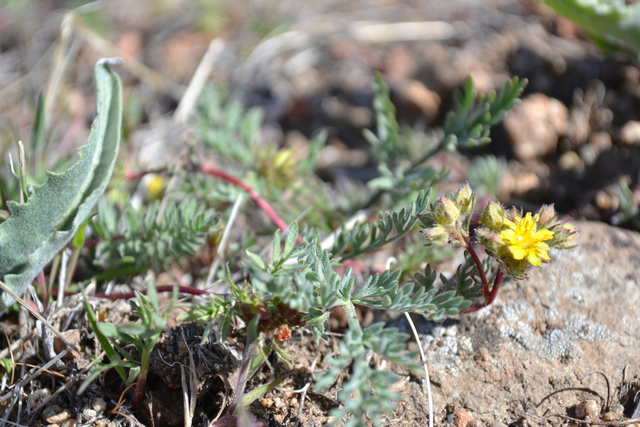Wild rose in Northern Nevada, California now protected
A wild rose that grows in Northern Nevada and Northern California will be protected through the Endangered Species Act, the U.S. Fish & Wildlife Service announced Monday.
The small, yellow-flowering Webber’s ivesia will be included on the federal government’s threatened list. It has 16 known locations in Nevada’s Washoe and Douglas counties and is found in California’s Lassen, Plumas and Sierra counties.
The plant’s main threat is non-native invasive species such as the medusahead and cheatgrass weeds, according to Dan Balduni, spokesman for the Fish & Wildlife Service in Nevada. The weeds compete with existing, already-established Webber’s ivesia plants for water and nutrients and can prevent new seedlings from growing.
“It’s the same reason we have the desert tortoise listed — habitat loss,” Balduni said.
Without protection, Balduni said, “it ultimately ends up disappearing and has nowhere else to go.”
Other threats to the plant include wildfires, which weeds can make more intense. The last wildfire to affect the rose’s habitat was the Pinehaven fire in 2012 near Reno. Urban development, authorized and unauthorized road use and livestock grazing also threaten the plant, according to the U.S. Fish & Wildlife Service.
The Webber’s ivesia typically lives in areas with sparse vegetation and shallow, rocky clay soils anywhere from 4,475 feet to 6,237 feet in elevation. It is a low-growing plant and reaches about 10 inches in diameter.
It has greenish-gray leaves and dark red, wiry stems that sprout tiny, head-like clusters of bright yellow flowers from May through June each year.
The U.S. Fish & Wildlife Service first identified the plant as a candidate for protection in 2002, but its protection was not deemed vital in comparison with other threatened species until 2013.
Nevada is currently home to 15 protected plant species.
The current Webber’s ivesia population encompasses 2,170 acres total, about the size of Floyd Lamb Park at Tule Springs. About 70 percent of the plant’s habitat is on federal land, 10 percent is on state land and 20 percent is on private land, according to the U.S. Fish & Wildlife Service
The plant’s protection will be published today in the Federal Register, the U.S. government’s official journal. The Webber’s ivesia officially will be listed as threatened effective July 3.
Contact Rachel Crosby at rcrosby@reviewjournal.com or (702) 383-0211.

















